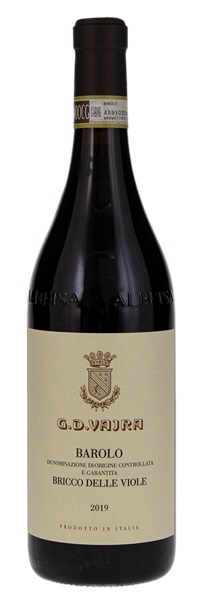Lightly depressed cork
Removed from a professional wine storage facility; Purchased at retail

Image above is an example. To view the image of the lot, click the item number.
Estimate
With its high vantage point in the hills west of Barolo, Bricco delle Viole is a world apart in terms of soils (with Sant'Agata marl and fossils) and even harvest times. Slow and careful ripening like the kind that characterizes fruit in 2019 renders a very delicate and ethereal expression with floral tones, wild mint and licorice. This organic wine is solid in build and structure.
...offers a beguiling combination of depth and energy... Black cherry, graphite, crushed rocks, mint, sage and incense all open in the glass...opens up on its resonant, expansive finish...
Its gorgeous and alluring perfume of fresh roses is followed by a Burgundian, elegant red with incredible length and no harsh edges, fine and present tannins, and beautiful, graceful concentration.
A juicy Barolo, with vibrant acidity and a fluid profile that exudes cherry, raspberry, mown hay, mineral and eucalyptus aromas and flavors. Tight yet long, with excellent potential.
Aromas of crushed stone, flowers and berries follow through to a medium to full body with firm and velvety tannins and a juicy finish.
Smells earthy, like the damp winter depth of rich dark soil of an oak forest. Smells of violets. Mushrooms crushed underfoot. Tastes of tea leaves and tamarind and dried sour cherries and cranberries. Tastes of the bitter red-gold sere of autumn... Tendrils of woodsmoke on the finish.